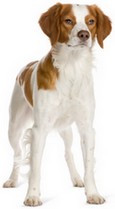
#10 Brittany Spaniel
The Brittany Spaniel is the most popular of the French spaniels, used extensively by bird hunters as a pointer/retriever. But the hunters, and millions of families worldwide, have discovered they make an excellent companion at home, too. The good-natured Brittany should be walked several times a day.

#9 Japanese Chin
Once the favorite of the Japanese Imperial Court, the Japanese Chin plays boisterously and continuously until it literally drops from exhaustion! The Chin really is the perfect pet - intelligent, full of charm, very gentle and clean.
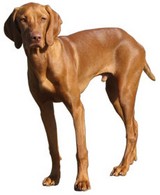
#8 Vizsla
A hard-working hunting dog originating from Hungary, the Vizsla has a keen sense of smell, is calm, sensitive, and easy to train. You should avoid adopting a Vizsla if you live in the city - they have tremendous energy that needs to be burned off regularly.
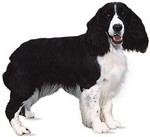
#7 English Springer Spaniel
The English Springer Spaniel does everything with gusto, and can be overly enthusiastic unless given plenty of exercise (since they originally served as game retrievers, this is understandable!). Overall they are a cheerful, energetic, and playful breed.

#6 Cavalier King Charles Spaniel
The King Charles Spaniel is believed to have originated in China or Japan centuries ago. The Cavalier variety, which originated in England in the 1920's, are incredibly gentle, sweet, and eager to please.
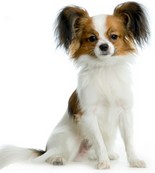
#5 Papillon
The vivacious and charming Papillon is the epitome of elegance and among the most dignified of breeds. Like the Japanese Chin, the breed was popular with royalty as a "lap" or "companion" dog for centuries. Tireless in play, it delights its admirers with its amusing antics. It is extremely affectionate and loves to be cuddled, but some report the breed to be a bit possessive. They are one of the top 10 most intelligent dog breeds.
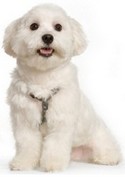
#4 Bichon Frise
The Bichon Frise is very popular in Italy, France, Great Britain, and North America. This playful powder-puff charms everyone with its tricks and lively, almost human expression. They simply love everyone, but be warned - they tend to bark a lot, and may be hard to house-train.

#4 Havanese
Tied at #4 with the Bichon, the Havanese can trace its recent origins to Cuba, where they are also known as Habeneros. This diminutive breed loves to be the center of attention, and is affectionate with just about everyone and everything. As with many of the smaller breeds, the Havanese tend to be quite vocal.
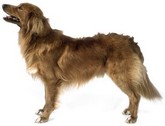
#3 Nova Scotia Duck Trolling Retriever
The highly energetic Nova Scotia Duck Trolling Retriever was developed in the early 19th century in, surprisingly enough, Nova Scotia. Like many of the retriever breeds, they are gentle, eager to please, and show enthusiastic affection for just about everyone.
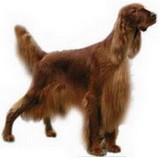
#2 Irish Setter
Energetic and tenacious, the Irish Setter has a keen mind, and is eager to please. Be sure to exercise your Irish regularly, or they can become frustrated, even neurotic. They are an incredibly friendly family dog, but because of their unbridled enthusiasm in showing affection, may not be the best choice if you have small children.
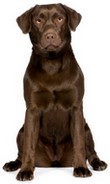
#1 Labrador Retriever
A deserving #1 on our list, the Labrador Retriever is loved and respected world-wide for contributions as war dogs, police dogs, and guides for the blind. Exceptional patience, intelligence and gentleness make Labradors prized pets the world over. What else can we say? A truly exceptional breed, and one of the top 10 most intelligent dogs.
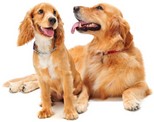
#1 Golden Retriever
The Golden Retriever ties with the Lab at #1, and share most of the Lab's positive personality traits. This overwhelmingly popular breed will use any opportunity to demonstrate its affection for you, from exhuberant play to, of course, retrieving! The Golden also ranks highly on our list of most intelligent dogs.